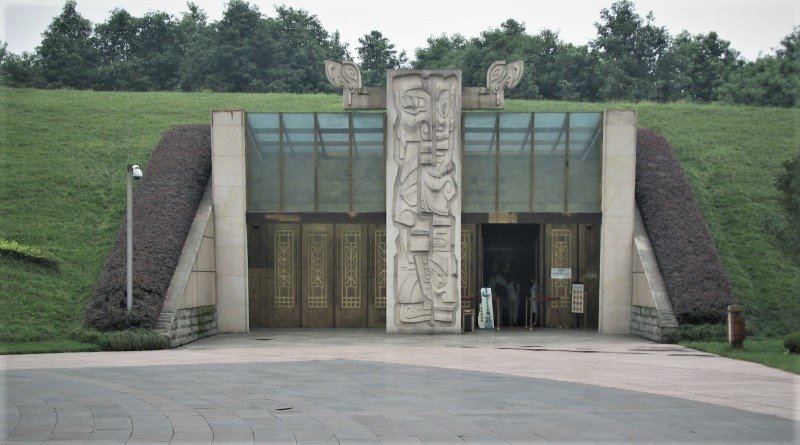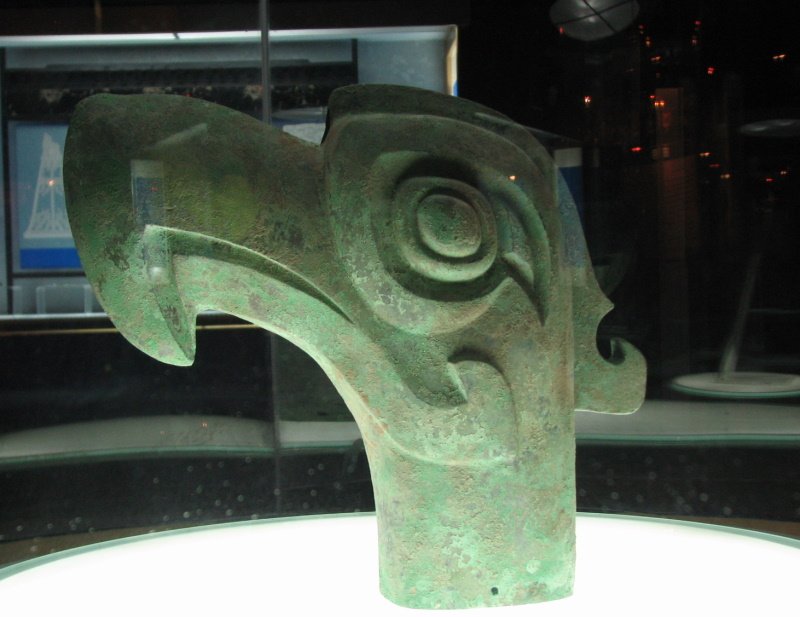I hold a long fascination for China, which hit an early peak when I choose to study Sinology at University when I was 18. The course didn’t really work out for me and I quit after 2 years – I did not have the discipline at the time to put in the hours to master the language. But I have always stayed interested, do speak ‘basic Chinese’ and have now visited China 5 times. In 2007 I embarked on a 3 month solo trip across China, one of my best journeys ever. On that trip I managed to visit 20 new WHS; later WHC meetings added another 2 retroactively.

I started that journey from the Sichuan capital of Chengdu with a day trip to Sanxingdui. This Bronze Age archaeological site is now part of the Archaeological Sites of the Ancient Shu State TWHS, but wasn’t when I visited. It had rained overnight and I changed my program for the day from the WHS of Dujiangyan to the more indoor experience of the archaeological museum in Sanxingdui. There was a daily direct bus from Chengdu’s southern bus station to Sanxingdui. Unfortunately, despite a last minute taxi effort through the dense traffic, I missed that one. On to the northeast bus station then, from where buses left every few minutes to the town of Guanghan. A local bus would take me the final few kilometers to Sanxingdui. When I wanted to disembark after 45 minutes at the bus station in Guanghan, I noticed that other people remained in the bus and I accidentally had hit a direct bus to my destination.
Sanxingdui turned out to be a huge complex, big enough to handle thousands of Chinese visitors at once. It consists of two exhibition halls and a surrounding park. Fortunately there weren’t many visitors, only some parents with children and a few Chinese groups. The Sanxingdui excavations made the world press in 1986 when hundreds of bronze, gold and earthenware objects were found in the fields. These are ceremonial tombs of the Shu, an empire that ruled this region from 3000 to 800 BC. Sanxingdui was the center of this Shu state. It was a walled city of 12 square kilometers.

I found the route through the exhibition halls to be cleverly designed. It starts with the historical story and with the less spectacular earthenware vases, pots and figurines. The last room of the first hall, which is dedicated to "sacred trees", was fascinating. In it were displayed bronze trees with many branches and leaves that were buried with the dead. Birds sat on the branches for better communication with the gods.
The second hall is about ten minutes away and contains the collection's prize pieces. For example a grave full of elephant tusks. It also holds a 40 centimeter high bird's head, a symbol that returns again and again in the ritual life of the Shu. Furthermore, dozens of bronze heads have been found, some of them with golden masks. The heads don't really look human, they look like aliens. The background music in the hall was appropriately adjusted to mystical bleep-bleep-bleep sounds.

Sanxingdui is a treasure trove of spectacular archaeological findings, displayed well and accompanied by explanation panels in both Chinese and English. The only thing that could keep it from being inscribed is the lack of tangible remains in situ, so we're actually inscribing a museum instead of an archaeological site. But a clever nomination dossier (it is already pitched as a counterpart to the Mesopotamian Civilization in the TWHS description) and the inclusion of some excavation sites could avoid this pitfall. This video by China's state news channel CCTV gives a good overview of the area.



